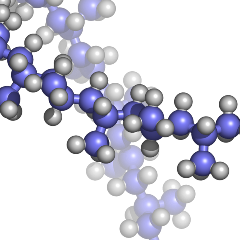
Photo-oxidation
Polypropylene is highly sensitive to the incident UV part of the sun’s radiation in the region 290–400 nm, which is responsible for the radiation-induced polymer photo-oxidation (Al-Malaika 1999). PP absorbs wavelengths above 285 nm due to absorbing impurities, particularly oxygen-containing species and trace levels of metals and other species present arising from production processes such as polymer manufacture, melt processing and fabrication. These impurities accelerate PP photodegradation under service conditions involving exposure to light.
The oxidation process of hydrocarbons is a free radical chain process characterised by three steps: initiation, propagation and termination. Free radicals that are formed during the initiation and propagation steps may undergo further reactions with atmospheric oxygen leading to insertions of various oxygencontaining groups, which will lead to changes in the physical characteristics of the bulk polymer (van Oosten et al. 2006).
Photo-oxidation of PP causes a development of surface cracks, discoloration, darkening and a decrease in molecular weight which results in gradual loss of mechanical properties and, ultimately, embrittlement. The outdoor performance or performance under non-museum conditions can be improved by the appropriate choice of photo-stabilisers, used either separately or in synergistic combinations.
References:
van Oosten, T.B., Joosten, I. and Megens, L. (2006) ‘Man-made fibres from polypropylene to works of art’, in The Future of the 20th Century: Collecting. Interpreting and Conserving Modern Materials, C. Rogerson and P. Garside (eds). London: Archetype Publications, 61–6.
Light stabiliser system
Ultraviolet light absorbers function by absorbing harmful UV radiation and dissipating it as thermal energy. The stabilisers function according to Lambert Beers law, which specifies that the amount of UV radiation absorbed is a function of both sample thickness and stabiliser concentration (Allen 1985). High concentrations of absorbers and sufficient thickness of the polymer are required before enough absorption takes place to effectively retard photodegradation. Hindered amine light stabilisers (HALS) are extremely efficient stabilisers against light-induced degradation of most polymers. They do not absorb UV radiation, but act to inhibit degradation of the polymer. Significant levels of stabilisation are achieved at relatively low concentrations. The high efficiency and longevity of HALS are due to a cyclic process wherein the HALS are regenerated rather than consumed during the stabilisation process. Hindered amines and light absorbers are used in combination to provide a level of stability which is higher than would be provided by using either type of stabiliser by itself. Such combinations are effectively used in many plastics. Stabilising of PP can be achieved best using a three-component system containing a phenolic antioxidant, a UV absorber of the benzotriazole type and a light protection agent such as a steric hindered amine.[See Ciba Specialty Chemicals Inc. } Research has shown that a three-component system has better workability than the sum of the separate components due to synergistic working of the system.
References:
- Allen, N.S. (1985) ‘The photo-stabilisation of polypropylene: a review’, Polymer Degradation and Stability 13: 31–76.